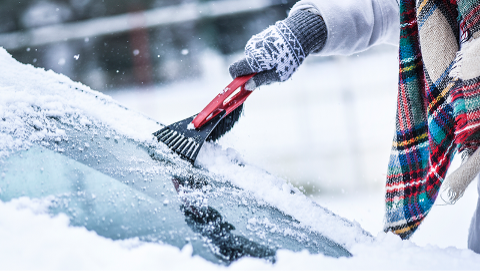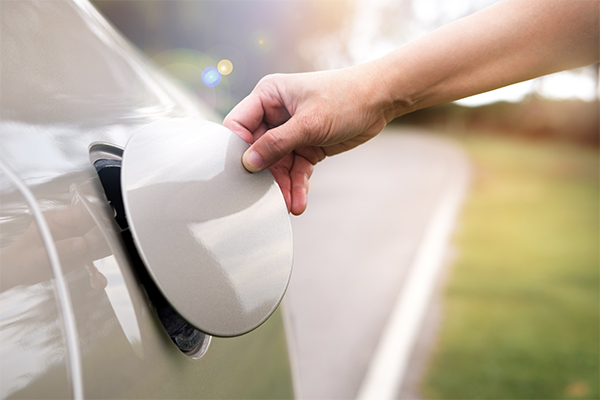Let's talk about that other flooded engine. We all know engines breathe air, so when an internal combustion engine made of ferrous materials is submerged in (salt)water, things can get expensive quickly. Fear not, your engine isn't dead if you take the right steps, but it is dead if you take the wrong steps. Here's how to get the water out.

Source | Akuppa John Wigham/Flickr
Assess the damage
Despite the devastation a flood causes, this particular issue may not be as bad as it looks. Modern engines have tight tolerances, so it's possible the engine may not have taken on any water. The worst way to check this would be to try and start the engine before looking it over. Water doesn't compress, so any water in the combustion chamber is likely to damage a piston or connecting rod. This phenomenon, called "hydrolocking," will ruin an engine pronto.
If you didn't see the vehicle until after the water receded, look for a dirty water line to see how high it crested. If the flood waters reached the bottom of the doors, then odds are your engine is fine. Water may have reached as high as the oil pan, so let the underside dry for a few hours at least, and then try an engine start.
With a water line to the top of the wheel rim, you are looking at more work. Some electronics were likely submerged, and the water may have accessed the inside of the engine or other critical systems.
When a flood crests the hood, you're in a whole different ballgame. If you have a classic, the carb probably allowed a lot of water to enter, so now you have water in everything from the intake manifold to the oil pan.
Signs of water damage
If the air filter and intake are wet, assume the worst and look for other signs of water entry.
If the dipstick is showing anything weird, like oil over the full line, or it won't stay in the dipstick tube, or the oil looks like it was mixed with milk, then you likely have water in the crankcase. That rear main seal is great at keeping oil in, but it wasn't designed to keep flood water out, so it will get into the engine internals after only a few hours submerged.
Another area in which to look for water is the fluids, like the coolant, power steering, and fuel systems. Water can find its way into a classic pretty easily, so it's best to check for water by disconnecting a fuel line and draining to a pan. If you find any water, drain the tank, lines, and change the fuel filter. A bottle of gas treatment probably wouldn't hurt either.
If you want peace of mind before an engine start, run an inspection camera into the cylinders. Humidity lining the cylinder wall is fine; standing water in the combustion chamber is not.

Get to work
Once the engine is out of the water, you'll need to get the water out of the engine. Disconnect the battery—ground cable, then positive cable—and set it somewhere dry. Remove plastic engine covers and dry everything you can reach with shop towels.
Pull the spark plugs and hand-crank the engine over a few times. Rotate the crank until the piston reaches its maximum height in the cylinder, so the towel or shop vac can easily reach the water. It won't get all of the water, but it should be enough. A powerful shop-vac run over the plug holes can evacuate water as well, without leaving any paper towel residue.
Another technique is to disconnect the fuel injectors and crank the engine over. The starter should have enough torque to fling all the standing water out of the spark plug holes in just a few revolutions. Then, change the oil and filters. Main bearings hate any kind of water contact, so change the oil again in 500 miles just in case.
Go ahead and buy the big pack of assorted fuses now. All of them should be replaced if they spent any time underwater.
Modern air intakes usually pull from a low spot in front of the radiator, so check the air filter and intake ducting. On a classic, replace the filter (even if it's the serviceable type), and buy some carb cleaner. If the water was filthy, or sea water, you're likely looking at a carb rebuild.
The transmission is a bit more sensitive to water damage than an engine. It's pretty airtight, but it also wasn't designed to be a submarine. With well over 100 tiny parts in this critical component, “It looks fine" isn't good enough here. Drop the pan, change the fluid and filter, and monitor it for any unusual behavior. If flood waters reached your axle differential it would be wise to change that fluid as well. Most axle differentials have a vent and if they become submerged water will mix with the gear oil. Drain the fluid by either removing the differential cover or drain bolt, or use a fluid pump. Fill the differential with the correct gear oil and any additives required for your vehicle.
If flood waters reached your axle differential it would be wise to change that fluid as well. Most axle differentials have a vent and if they become submerged water will mix with the gear oil. Drain the fluid by either removing the differential cover or drain bolt, or use a fluid pump. Fill the differential with the correct gear oil and any additives required for your vehicle.
Tossing in the towel
In a worst-case scenario, flood damage is beyond even a pro mechanic's ability to repair. Modern vehicles have sometimes thousands of wires, relays, sensors, and computers. That's a lot of stuff that wasn't designed to get wet, so fixing a sixth-generation Ford Mustang will be a lot harder than repairing a '67 Fastback. The higher the water reached, especially if it's saltwater, the more likely you should be talking to your insurance company about having it totaled.
Nothing is beyond fixing with enough money and time, but we're talking hundreds of failure points over the next several years. The commonly heard “It never drove the same again" was likely said of a flooded car. Call your insurance agent and find out what's covered to get an idea of when you can be back out on the road.
If you're in the used-car market, be wary of the situations in which the vehicles you're considering were previously. If the interior and carpets have a mildew smell that won't go away, avoid that car. Stained carpeting, weird accumulations of dirt, or even brand-new carpeting and upholstery are all tipoffs as well. When you're doing your homework on a used vehicle, remember that Carfax can do a thorough research job on a vehicle's title and history, and can quickly spot a flood title (required by state law in such instances).







